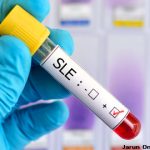The authors note that no clinical features were selected for use in the final models and that predictive models built using clinical and histology parameters alone performed quite poorly compared with the patient’s RNA-seq models.
The authors write, “This study supports the notion that disease endotypes, driven by diverse molecular pathology pathways in the diseased tissue, determine diverse clinical and treatment-response phenotypes. It also highlights the importance of integration of molecular pathology signatures into clinical algorithms to optimize the future use of existing medications and inform the development of new drugs for refractory patients.”
Kathryn Dao, MD, associate professor in the division of rheumatology at University of Texas Southwestern Medical Center, Dallas, commented in an email to Reuters Health, “This is an exciting study that gives us a glimpse of the future of how RA will be treated.”
“Currently, clinicians are selecting the next drug based on familiarity, availability, safety profile, cost, and patient preferences, but they don’t really know how effective the drug will be for that individual patient,” she says. “Selecting a drug that might not work is costly and delays the time to remission for patients – so the study is a step forward for precision medicine.”
“My concern is that the biomarkers of the synovium can change with time and with different treatments and different environments [use of prednisone/combination csDMARD, comorbidities, infections], so cycling treatment may still be necessary,” she says. “Additional studies are needed to confirm the results.”
References
- Rivellese F, Surace AEA, Goldmann K, et al. Rituximab versus tocilizumab in rheumatoid arthritis: Synovial biopsy-based biomarker analysis of the phase 4 R4RA randomized trial. Nat Med. 2022 May 19. Online ahead of print.
- Humby F, Durez P, Buch MH, et al. Rituximab versus tocilizumab in anti-TNF inadequate responder patients with rheumatoid arthritis (R4RA): 16-week outcomes of a stratified, biopsy-driven, multicentre, open-label, phase 4 randomised controlled trial. Lancet. 2021 Jan 23;397(10271):305–317.


